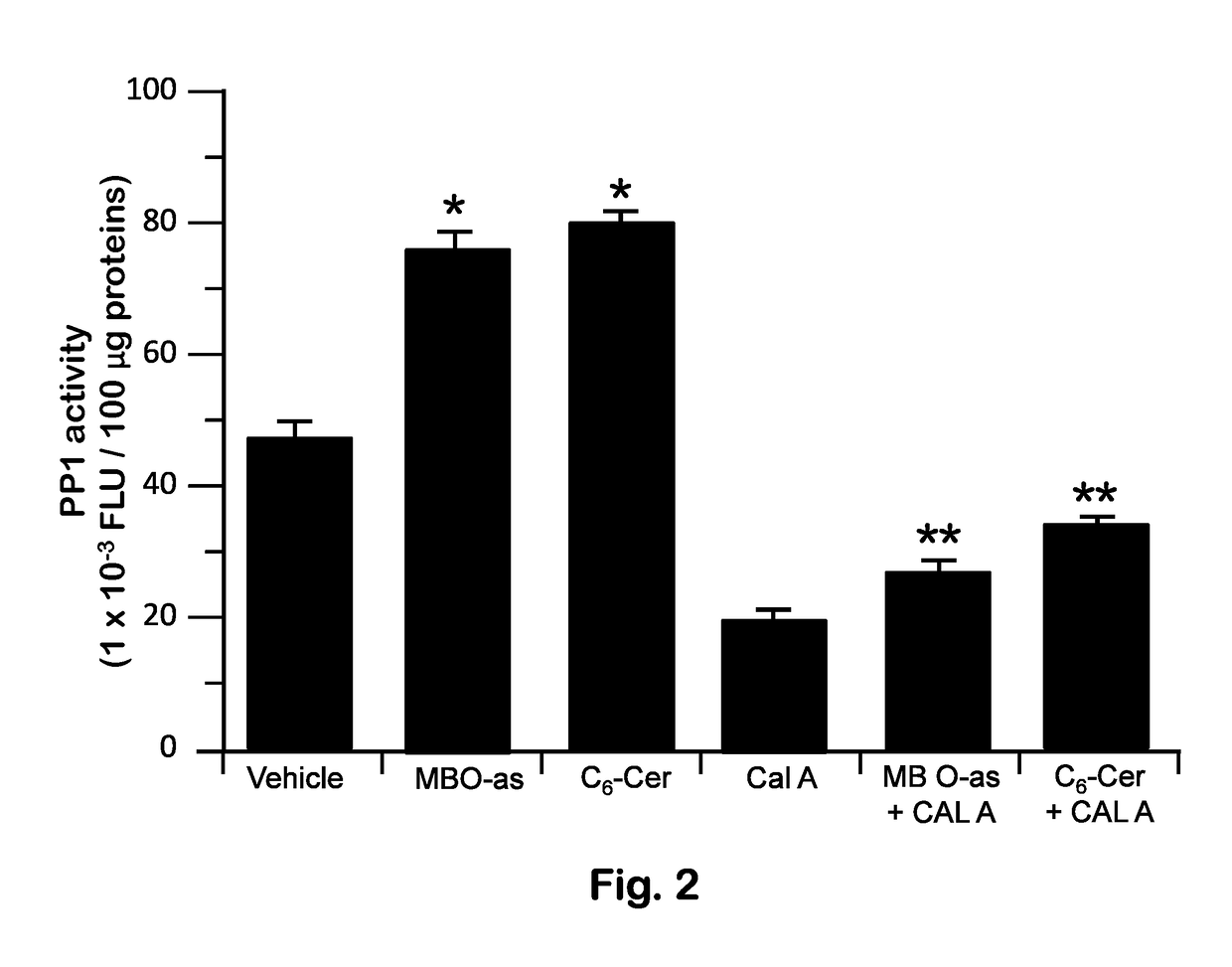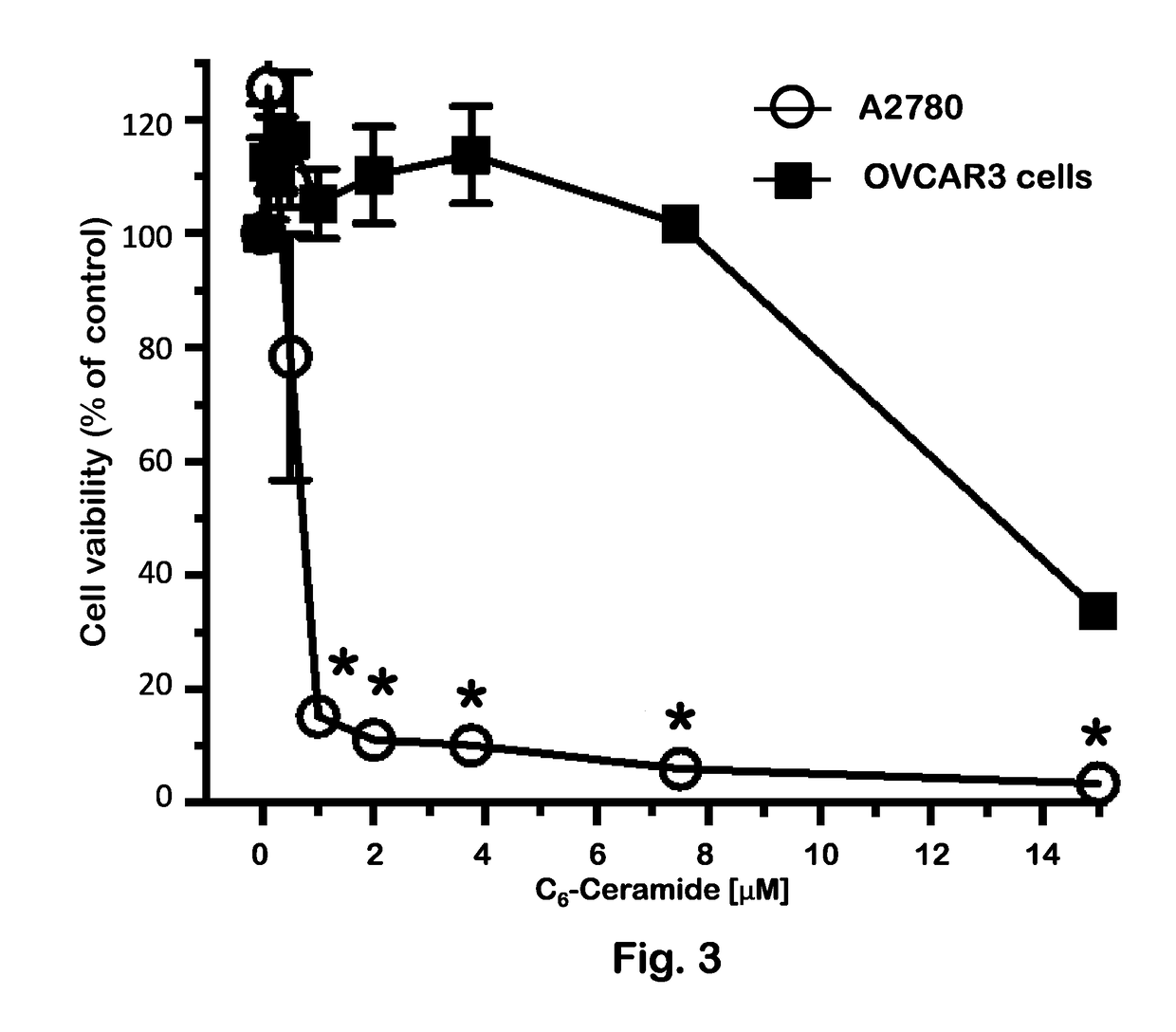Ceramide-Rubusoside Nanomicelles and Their Use in Cancer Therapy
a technology of ceramiderubusoside and nanomicelles, which is applied in the direction of amide active ingredients, organic active ingredients, pharmaceutical delivery mechanisms, etc., can solve the problems of promoting resistance to therapies, affecting bioavailability and efficacy, and prior approaches that have attempted to reactivate p53 function only limited success, so as to achieve high water solubility, restore p53 protein expression, and achieve the effect of high water solubility
- Summary
- Abstract
- Description
- Claims
- Application Information
AI Technical Summary
Benefits of technology
Problems solved by technology
Method used
Image
Examples
example 1
[0050]The Role of Cer in Restoring wt p53 Expression in Cancer Cells Harboring p53 Mutants.
[0051]A series of experiments is conducted to better understand the mechanism by which Cer restores wt p53 expression in cells with various p53 mutants, and to identify the Cer species that are most effective in restoring wt p53 expression. Without wishing to be bound by this hypothesis, we hypothesize that Cer modulates the restoration of p53 protein expression via post-transcriptional processes involving p53 mRNA splicing. Experiments and testing include the generation of Cer-RUB nanomicelles, genetic manipulation of cellular Cer synthesis, better characterization of Cer restorative effects in cancer cells harboring various p53 mutants (e.g., deletion, missense), and comparing effects of different Cer species.
example 2
[0052]Cer-RUB Nanomicelles Enhance Cer Water Solubility.
[0053]We solubilized Cers by complexation with rubusoside (RUB). Compared to native C6-Cer, the aqueous solubility of C6-Cer-RUB was enhanced more than 2,000-fold (2 mg / ml vs. 6-Cer-RUB complex in water solution was mono-disperse as measured by dynamic light scattering (Nanotrac 251), with an average diameter of ˜4 nm, and a distribution of diameters ranging from ˜2.0 nm to ˜6.5 nm. The C6-Cer-RUB complex was readily dried into a powder form, which we have observed to be stable at room temperature for at least several weeks, if not longer. The C6-Cer-RUB complex in aqueous solution is colorless, even at a concentration of 2 mg / mL. (A less pure source of rubusoside might result in a greenish or brownish tinge to the solution.) Alternatively, nanomicelles could be formed by mixing the components in water, for example by homogenization at 12,000 rpm for 10 minutes.
[0054]To test water-solubility, different amounts of C6-Cer and RUB...
example 3
[0058]The Restorative Effects of Cer on wt p53 Expression and Function in Mice Carrying Missense p53 Mutant Tumors.
[0059]Long-carbon-chain Cers, such as C18-Cer, are expected to have greater potency than short-chain Cers. However, their hydrophobic nature has previously limited their use. Our novel, water-soluble Cer-RUB complexes overcome these problems, and may be used to inhibit p53-mutant cancers in vivo. We will also examine the pharmacokinetics and pharmacodynamics of the novel water-soluble Cer nanomicelles in mice with p53-mutant tumors.
[0060]Because they are hydrophobic, little has previously been reported concerning the possible effects of exogenously supplied Cers, particularly long-carbon-chain Cers in vivo. In practicing the present invention, different effects on cell signaling and modulation of p53 gene expression can be obtained using Cers of different chain lengths, or mixtures of different chain lengths.
[0061]We examined the effects of suppressing GCS on wt p53 exp...
PUM
| Property | Measurement | Unit |
|---|---|---|
| diameters | aaaaa | aaaaa |
| diameters | aaaaa | aaaaa |
| diameter | aaaaa | aaaaa |
Abstract
Description
Claims
Application Information
 Login to View More
Login to View More - R&D
- Intellectual Property
- Life Sciences
- Materials
- Tech Scout
- Unparalleled Data Quality
- Higher Quality Content
- 60% Fewer Hallucinations
Browse by: Latest US Patents, China's latest patents, Technical Efficacy Thesaurus, Application Domain, Technology Topic, Popular Technical Reports.
© 2025 PatSnap. All rights reserved.Legal|Privacy policy|Modern Slavery Act Transparency Statement|Sitemap|About US| Contact US: help@patsnap.com



